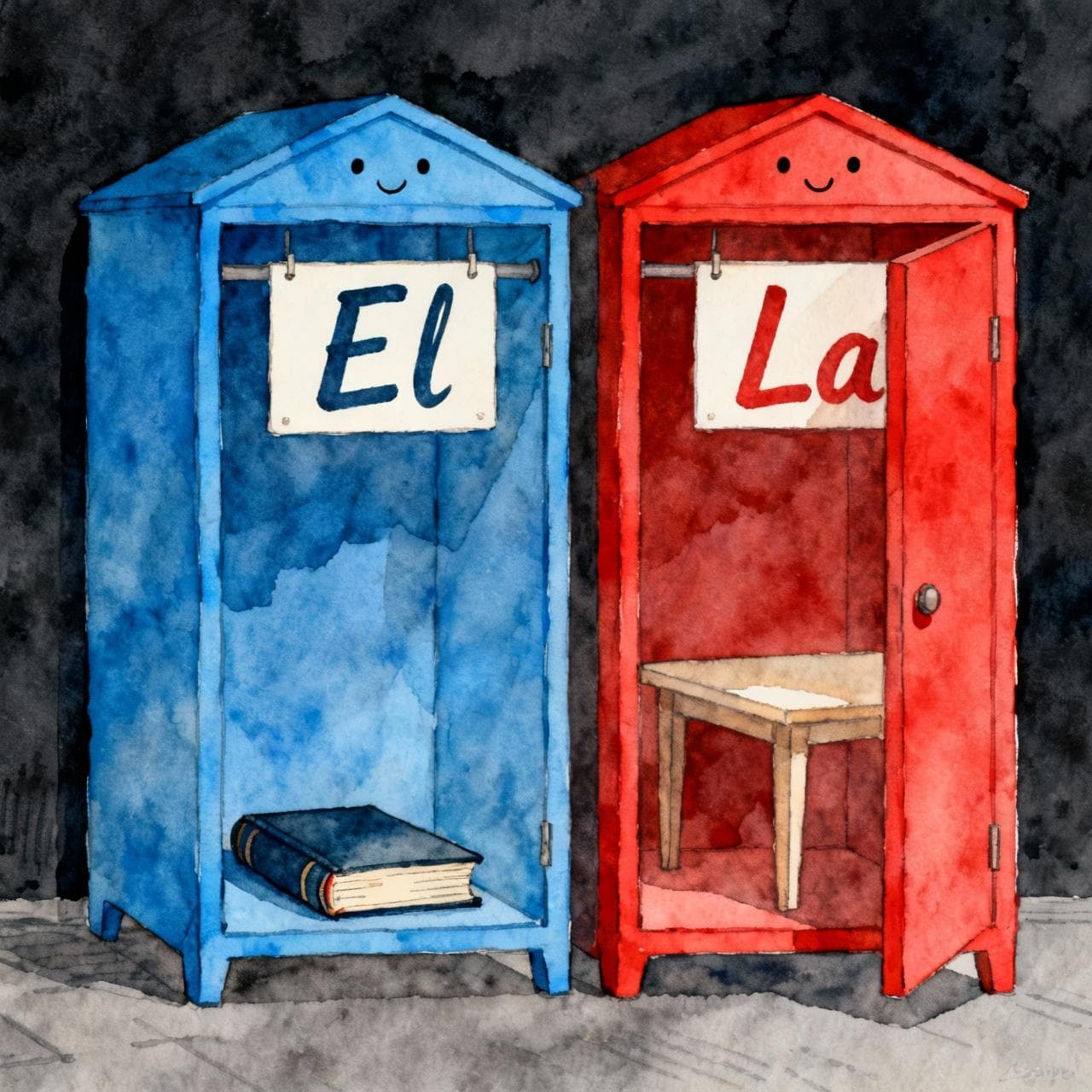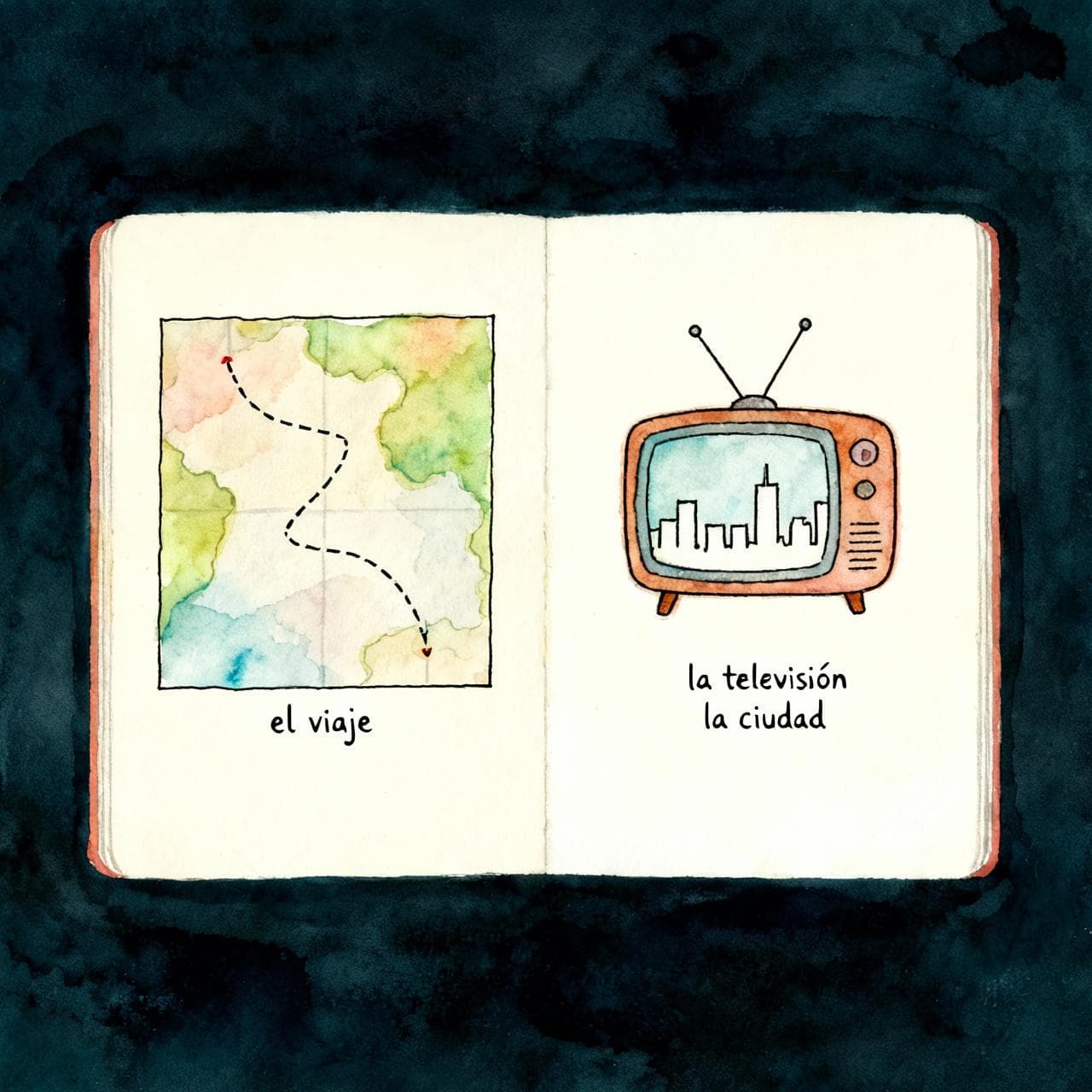Table of Contents
Welcome, language learner! You’ve decided to tackle Spanish, and you're immediately faced with a curious concept: every single noun, from a sillachair to a planetaplanet, has a gender.
If you're an English speaker, this might feel a bit strange. Why does a table need to be "feminine" and a book "masculine"?
Don't worry! While it seems odd at first, the system of noun gender is one of the foundational pillars of Spanish grammar. Mastering it will make everything else—from adjectives to pronouns—click into place.
In this guide, we'll demystify noun gender and give you the tools to confidently use el, la, un, and una, the four little words that make a huge difference.
What is Grammatical Gender, Anyway?
First things first: grammatical gender has very little to do with biological gender. It's simply a way of classifying nouns. Think of it like sorting clothes into two closets: one for masculine nouns and one for feminine nouns.
Every noun in Spanish lives in one of these two closets. The key is that other words, like the articles "the" and "a/an," must match the gender of the noun they're describing.

Let's meet our four key players:
- El (the, masculine)
- La (the, feminine)
- Un (a/an, masculine)
- Una (a/an, feminine)
Your mission is to learn how to pair the right article with the right noun. Let's start with the most famous ones: el and la.
The Definite Articles: El and La (The)
When you're talking about a specific, "definite" noun, you use el or la. This is the same as using "the" in English.
Team Masculine: Using El
The most common rule of thumb is:
If a noun ends in -o, it's usually masculine and uses el.
Here are some examples:
- el librobook (the book)
- el perrodog (the dog)
- el niñoboy (the boy)
- el vasoglass (the glass)
Team Feminine: Using La
On the flip side, the general rule for feminine nouns is:
If a noun ends in -a, it's usually feminine and uses la.
Check out these examples:
- la casahouse (the house)
- la mesatable (the table)
- la niñagirl (the girl)
- la ventanawindow (the window)
Watch Out for Rule-Breakers!
Languages love exceptions! Some common words break the -o/-a rule. For instance, la mano (the hand) is feminine, while el día (the day) and el problema (the problem) are masculine. You'll pick these up with practice!
Quick Check-in!
Let's test your knowledge so far. Can you pick the correct article?
Which article correctly completes this phrase: ___ puerta (the door)?
The Indefinite Articles: Un and Una (A/An)
What if you're not talking about "the book" but just "a book"? That's where indefinite articles come in. They refer to a general, non-specific noun.
The good news? The gender rules are exactly the same!
Team Masculine: Using Un
If a noun is masculine (it uses el), you use un for "a" or "an."
el libro-> un librobook (a book)el perro-> un perrodog (a dog)
Team Feminine: Using Una
If a noun is feminine (it uses la), you use una.
la casa-> una casahouse (a house)la mesa-> una mesatable (a table)
This logic makes things much easier. If you know the definite article (el/la), you automatically know the indefinite one (un/una).
Here's a handy chart to summarize:
| Gender | Definite Article (The) | Indefinite Article (A/An) | Example |
|---|---|---|---|
| Masculine | el | un | el gato / un gato (the/a cat) |
| Feminine | la | una | la silla / una silla (the/a chair) |
Let's see the difference in action. Getting the article right is crucial for sounding natural.
Drag the handle to compare
Beyond -O and -A: More Gender Clues
Okay, the -o/-a rule is a great start, but what about words that end in other letters? While many of these just need to be memorized, there are some other helpful patterns to look for.

Common Masculine Endings:
- -or:
el color(the color),el motor(the motor) - -aje: el viaje (the trip),
el garaje(the garage) - -ma: This is a big one! Many words ending in
-mathat come from Greek are masculine.el problema(the problem)el sistema(the system)el idioma(the language)
Common Feminine Endings:
- -ción:
la canción(the song),la estación(the station) - -sión:
la televisión(the television),la decisión(the decision) - -dad: la ciudad (the city),
la universidad(the university) - -tad:
la libertad(the freedom),la amistad(the friendship)
Your New Study Habit
From now on, whenever you learn a new Spanish noun, learn it with its article! Don't just memorize "casa." Memorize "la casa." This will save you so much time later on.
Time to Build a Sentence!
Can you unscramble the words below to form a correct sentence? Pay close attention to the articles!
Arrange the words to form a correct sentence:
One Last Tricky Rule: The Case of El Agua
There's one more quirky rule you should know. It looks like an exception, but it's really all about pronunciation.
Feminine nouns that start with a stressed "a-" or "ha-" sound use the masculine article el in their singular form.
Why? Try saying "la agua" out loud. The two "a" sounds blend together and sound a bit clumsy. To make it flow better, Spanish speakers use el.
- el aguawater (the water)
- el águilaeagle (the eagle)
- el hachaaxe (the axe)
It's Still Feminine!
Even though it uses el, the noun agua is still grammatically feminine. This means any adjectives describing it must be feminine. For example, you would say "el agua fría" (the cold water), not "el agua frío."
You've Got This!
Whew, that was a lot! But you've just learned one of the most important concepts in Spanish grammar.
Let's recap:
- All Spanish nouns are either masculine or feminine.
- The article (
el/la,un/una) must match the noun's gender. - The
-ofor masculine and-afor feminine rule is your best friend. - Learn the common exceptions and other ending patterns over time.
- Always learn new nouns with their articles!
Noun gender might feel like a hurdle at first, but with a little practice, it will become second nature. Before you know it, you'll be choosing between el and la without even thinking.
Keep practicing, stay curious, and happy learning!